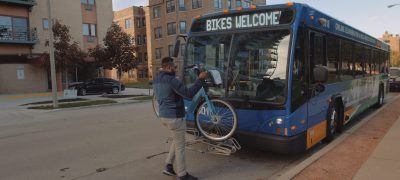Mobility as a Service, known as MaaS, is not in itself a technology; nor is it a defined transportation system. Rather MaaS is the technological enabling of a business model that, when complete, includes a comprehensive source of information about and payment for whatever transportation modes exist in a given area, such as transit, volunteer transportation services, or nonemergency medical transportation (NEMT), so that information, payment, scheduling and dispatch, can all be integrated on a common platform.
Universal MaaS is NOT the Only Definition
A MaaS system should include whatever modes exist in a given area, be they fixed route or any type of demand-response. Sometimes called Universal MaaS, a term embraced by AARP, the “Universal” conveys the message that specialized transportation or assisted services are integrated into the MaaS ecosystem. Universal MaaS, however, is not always what is when people use the term MaaS. For many, MaaS includes publicly available transportation, including transit, ridehailing, microtransit, and shared micromobility modes (such as bikeshare and scooters). The failure to embrace Universal MaaS is not necessarily intentional, but results from the fact that only a subset of transportation professionals are aware of the ins and outs of NEMT and human services demand-response modes, particularly outside of large cities and major metropolitan areas, or about the transportation challenges for people with disabilities and older adults. MaaS is happening around the world and popping up in the US, at least in the form of introductory steps. A note of caution: MaaS is a term that is currently abused and stretched to mean very different concepts. Because MaaS is the hot term these days, many tech vendors and app developers wish to be seen as operating under the MaaS umbrella, even if that means expanding that umbrella a bit far. By knowing the definition, one becomes an informed consumer who is able to determine whether a vendor is talking MaaS or something else.
What MaaS Means for the Consumer
MaaS can be defined either from the perspective of the consumer or the transportation provider. For the consumer, a true MaaS system means: 1. An app, a website, and/or a phone number that is (are) a source of information about what modes are available, including eligibility; 2. Prices of available modes for a particular trip, or type of trip; 3. Scheduling and payment for the trip – or series of trips; and 4. Real-time information, alerts or notifications. A conventional way to think about MaaS for the potential rider is that “[r]ather than having to locate, book, and pay for each mode of transportation separately, MaaS platforms let users plan and book door-to-door trips using a single app. By answering the question of how best to get individual users where they’re going based on real-time conditions throughout the network, taking account of all the possible options and each user’s own preferences (for example, time and convenience vs. cost), and facilitating seamless mobile payment, MaaS becomes a user-centered mobility paradigm.” The Rise of Mobility as a Service, Deloitte Review (2017).
What MaaS Means for the Transportation Provider
For a transit agency or other transportation provider, MaaS is partly a philosophical approach to enabling a transportation network, partly a business model, and partly the technology interfaces for both transportation providers and rider that enables a MaaS system to become reality. MaaS assumes that transportation providers – be they transit, Uber, a social services agency, or a volunteer organization – view each other as part of one entirety rather than strictly as competitors. The airlines essentially made this transition when permitting usage of software systems to arrange flights. American and United Airlines, for example, are willing to enable customers to book flights through the common marketplace of online platforms even though these corporations compete on price, loyalty program perks, and other aspects of service. For a transit agency and transportation provider, MaaS goes a step beyond one-call/one-click systems to provide one platform for entering transportation option information in a way that is easy, even automatic, for each provider, and that enables access online and through smartphones to the rider, with access to information, schedules, reservations, and payment – even bundled payment packages. One-call/one-click systems provide the foundation information and capacity on which to build a MaaS platform. MaaS certainly can also incorporate a one-call operation with a human operator personally responding during a telephone conversation. However, the idea is to reduce the expense of a reservation and dispatch system What MaaS Means that relies entirely on phone conversations.
Source
https://www2.deloitte.com/content/dam/Deloitte/nl/Documents/consumer-business/deloitte-nl-cb-ths-rise-of-mobility-as-a-service.pdf


